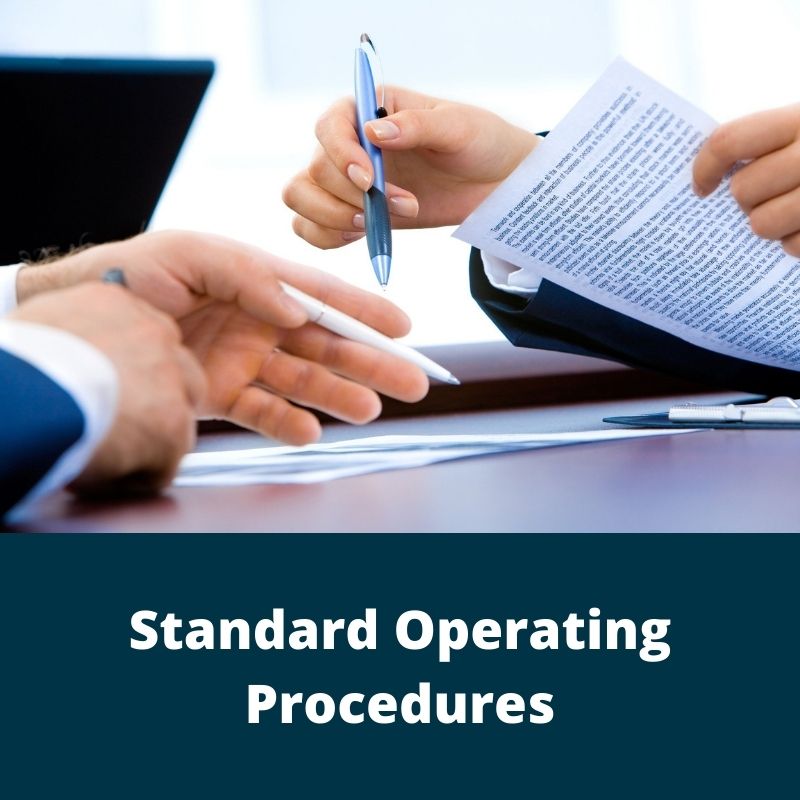Do you want to Improve Employee Training and Management efficiently in less time? Are you wondering what you can do to improve your business? Do you want to reduce errors and enhance productivity? If you answered ‘yes’ to these questions, then you must implement SOP(Standard Operating Procedures) in your business which will solve your problems.
A standard operating procedure(SOP) is a set of step-by-step instructions compiled by an organization to help workers carry out complex routine operations. SOPs aim to achieve efficiency, quality output, and uniformity of performance while reducing miscommunication and failure. People working in a company may leave after sometimes. However, SOP will be there forever. They will enable workers to carry out organizational tasks effectively. It is the recipe of routine operations in any organization. In any company, there are policies, rules, and regulations within them. Then there are SOPs which are who, what, and when. Then there are work instructions that are documented on how to do a particular task.
For example, let’s say the policy of a company is that all food must go through a quality test. So who will do the quality test, a quality manager or a microbiologist? What does he need to do? Microbiological testing or few more testings. When is that needed to do? Maybe before shipping or selling it to the market. Then there are work instructions. Work instructions are a document specifying details on how to do a particular task. (policy=rules, SOP= who, what, when, Work instructions=How). Basically, a policy can have many SOPS and SOPS can have many work instructions in simple words.
Sop is a step-by-step explanation of a business process. SOPs do not focus on what needs to be completed but rather how it needs to be completed. SOPs are also an effective business tool because they are an easy way to share information with all employees on a particular process.
Why Your Business Needs Standard Operating Procedures?
1) To understand your business process
SOPs help you to evaluate more than just what you are doing now. SOPs can also help you decide how to move forward. Imagine that your organization wants to implement new timekeeping software. In order to determine what software to purchase, you really need to know all the ways your employees will use the software and which of your business process will be impacted. If you have complete and thorough SOPs you can use them to evaluate the software strengths and weaknesses by fully understanding your current processes. You will make the best choice for your organization.
2) Eliminate error and foster productivity.
SOPs provides a detailed set of instructions for performing a task. So this eliminates errors and uncertainty in your operation.
3) Provide consistency
Consistency is key to run a successful business. You may have questions about how SOPs can help to provide consistency. Well, when you write SOPs, everyone will follow the same procedures to produce results. If there are not any procedures, employees may forget the key steps, make errors, and the quality of products and services may degrade. So having SOPs means you have procedures for performing any tasks so that you will be assured that you are providing the best results for your customers.
4) Improve Employee Training and Management
Hiring and retaining employees become easier if you have standard operating procedures. The new employees could use SOP to learn overall things about your business. They can get insights on how tasks are executed and understand their responsibilities. If they have any questions, SOPs help to address their questions. So less time is required to train new employees and manage them efficiently. Thus, SOP is a guideline that helps everyone perform their tasks effectively and correctly.
5) Increase customer services
Sops defines a standard way of dealing with your clients. If customers have any queries regarding your products and services, it will be addressed clearly. It makes sure that each client is treated fairly and equally. If someone has a complaint about your product and services, there will be procedures for proper follow-up. So it helps to improve customer services.
How to create SOPS?
Sop’s creation is not completed overnight. It requires planning and preparation work before the documentation can even begin here. Here are the five steps you need to know to be successful when creating SOPs.
1) To develop a list of processes that need SOP creation.
The best way to begin this task is to have each manager talk with their employees in order to create a list of potential SOPs. Then have all of the managers meet to review all of the lists. This way you can begin to see if there are any redundancies.
2) Plan the process
- Determine the format
- Agree on a template
- Establish a review process
- Determine how SOPs will be accessed
3) Conduct interviews
- Interview the employees who do the work.
- Check for documentation that may already be available.
4) Write, review and publish
- Add your notes to the template.
- Determine gaps in information.
- Review with subject matter experts.
- Obtain input from management.
- Submit to the SOP Project Manager.
- Determine who will be responsible for oversight and maintenance.
5) Maintenance
- Review SOPs at least once a year.

